PERÚ TRAVEL PACKAGES

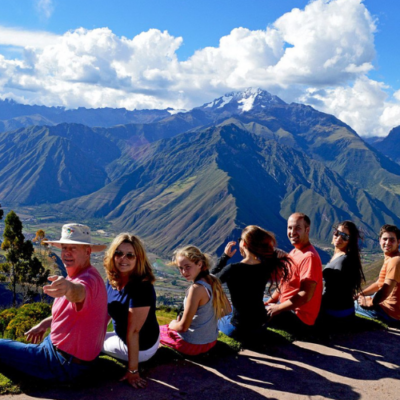

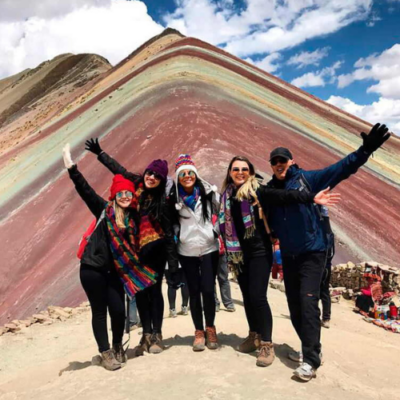

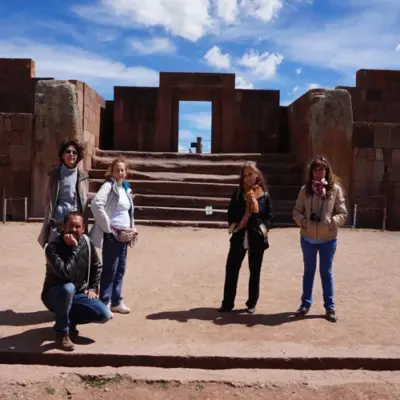
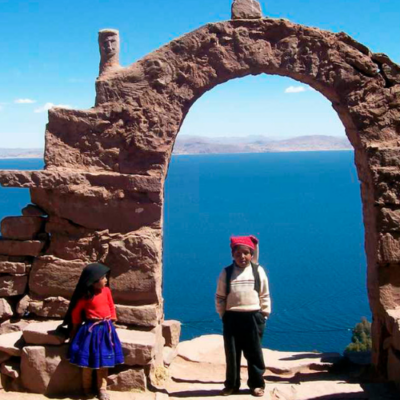

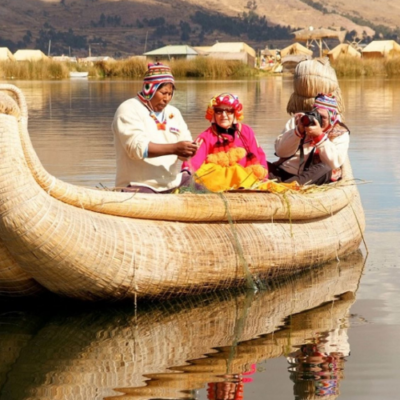


22 February, 2024
Exploring the southern Peru is embarking on an unforgettable adventure through breathtaking landscapes, rich cultural traditions, and historical wonders that seem to stop time. In this corner of the world, each destination is a promise of unique experiences, from the majesty of the Colca Canyon to the enigmatic beauty of Machu Picchu. Get ready to discover the tour of Peru that will make your trip an epic experience.

Machu Picchu, the iconic lost city of the Incas, is a wonder that needs no introduction. Located high in the Andean mountains in southern Peru, this ancient citadel offers a window to the past and an unforgettable experience for all who visit. With its stunning location, surrounded by lush vegetation and towering above the clouds, Machu Picchu is a jewel that shines brightly in southern Peru.
Machu Picchu sits at 2,430 meters above sea level, on a mountain ridge above the Sacred Valley. To reach it, most visitors take a train from Cusco or Ollantaytambo to Aguas Calientes, the nearest town, and from there, a short bus winds its way to the entrance of the site. The more adventurous may opt for the Inca Trail, a multi-day hike culminating at the Sun Gate, offering spectacular views of the citadel at sunrise.
Built in the 15th century by Inca Pachacútec, Machu Picchu is a testament to Inca engineering and architecture. Although its exact purpose remains a mystery, it is believed to have served as a residential or ceremonial complex. The citadel includes temples, plazas, and dwellings, and is renowned for its advanced terrace agriculture and sophisticated water management.
Within Machu Picchu, the Temple of the Sun, the Intihuatana Stone (the Sun Dial), and the Temple of the Three Windows are must-see sites. Each offers a glimpse into the spiritual, scientific, and social depth of Inca culture. Additionally, Huayna Picchu mountain, which offers a panoramic view of the entire citadel, is a popular albeit demanding hike for visitors.

Arequipa, affectionately known as the White City, is a gem of southern Peru that dazzles all who visit with its unique beauty, rich history, and vibrant culture. This city, surrounded by imposing volcanoes such as Misti, stands out for its buildings constructed with sillar, a white volcanic stone that glows in the sunlight, giving it a unique and unparalleled charm. Engaging in a Peruvian expedition here connects you deeply with the essence of the country’s heritage and landscapes.
Arequipa’s historic center is a UNESCO World Heritage Site, famous for its colonial architecture mixed with native elements. The Arequipa Cathedral Basilica, located in the Plaza de Armas, is an impressive example, with its sillar facade capturing the essence of the city. Another treasure is the Monastery of Santa Catalina, a religious citadel that resembles a village within the city, with colorful alleyways, plazas, and gardens.
Arequipa’s cuisine reflects the diversity and richness of southern Peru. Dishes like rocoto relleno, chupe de camarones, and adobo arequipeño not only delight the palate but also tell stories of tradition and cultural blending. Visiting a picantería, where these and other local delicacies are served, is an experience no traveler should miss.
Around Arequipa, nature offers unparalleled spectacles. The Colca Canyon, one of the deepest in the world, is home to the majestic Andean condor and a favorite destination for hiking and birdwatching. The thermal baths of Yura, with their mineral-rich waters, promise a moment of relaxation after a day of adventure.

The Colca Canyon, located in southern Peru, is a natural wonder that offers a unique combination of scenic beauty, rich culture, and unmatched adventure. With a depth of over 3,400 meters, it is one of the deepest canyons in the world, surpassing even the famous Grand Canyon in the United States.
One of the greatest attractions of the Colca Canyon is the opportunity to see the majestic Andean condor up close, the largest flying bird in the world. The Cruz del Condor viewpoint is the perfect place for this, especially early in the morning when these impressive birds soar on thermal currents.
For nature and adventure lovers, the Colca Canyon offers hiking trails ranging from day hikes to multi-day excursions traversing the canyon. These routes not only provide spectacular views but also lead visitors through remote villages where time seems to have stood still.
After a day of exploration, there is nothing like relaxing in the natural hot springs found in the area. La Calera, near the town of Chivay, is one of the most popular places, where the warm water is perfect for soothing tired muscles.
The Colca Canyon is not only a natural spectacle but also a place where pre-Inca cultures and local communities keep their traditions alive. The colorful costumes, handicrafts, and festivities are a testament to the rich cultural heritage of southern Peru.

Lake Titicaca, located on the high plateau of southern Peru, is the highest navigable lake in the world and a place of immense natural beauty and profound cultural significance. This vast body of blue water, shared between Peru and Bolivia, impresses not only with its breathtaking landscapes but also with the communities that have inhabited its shores and islands for centuries.
These incredible islands, entirely built of totora, an aquatic plant from the lake, are home to the indigenous Uros community. Visiting these islands offers a fascinating glimpse into a way of life adapted entirely to the aquatic environment of the lake, showcasing construction techniques and traditions that have been passed down through generations.
Taquile is known for its stunning textiles, recognized even by UNESCO. Walking on this island not only provides panoramic views of Lake Titicaca but also the opportunity to get up close and personal with the life and customs of its inhabitants, who proudly maintain their cultural traditions.
Lake Titicaca is a rich ecosystem, home to numerous species of birds, fish, and plants, some of which are endemic to the lake. The lake’s biodiversity is a crucial part of its charm, offering opportunities for birdwatching and exploration of its unique flora and fauna.
Around the lake are several important archaeological sites that offer a window into the pre-Inca and Tiwanaku past. These sites, including the chullpas of Sillustani, are testimonies to the ancient civilizations that once flourished on the shores of Lake Titicaca.
 Valley of the Incas: Living History in Southern Peru
Valley of the Incas: Living History in Southern Peru
The Sacred Valley of the Incas is a magical corridor that stretches between the cities of Pisac and Ollantaytambo, near Cusco, in the heart of southern Peru. This valley, blessed with astonishing fertility, winding rivers, and the imposing splendor of the Andes, was the center of Inca civilization. Today, it remains a place where the past comes to life and ancestral culture continues to breathe in every corner.
The Sacred Valley offers unparalleled natural beauty, with green fields stretching as far as the eye can see, surrounded by majestic mountains. The Urubamba River runs through the valley, adding a touch of serenity to the landscape and fertilizing the land, just as it did in Inca times.
Pisac and Ollantaytambo are historical jewels in the Sacred Valley. Pisac is famous for its craft market and its impressive Inca ruins perched atop a hill, with agricultural terraces defying gravity. Ollantaytambo, on the other hand, is an ancient fortified complex known for its grand temple and ceremonial terraces. These sites not only showcase the advanced engineering and architecture of the Incas but also their deep respect for nature.
The Sacred Valley is a place where traditions endure. Local communities keep the customs of their ancestors alive, from agriculture to the crafting of colorful textiles using techniques passed down through generations. Visiting the Sacred Valley is a unique opportunity to experience authentic Andean culture in southern Peru.
In addition to its historical and cultural richness, the Sacred Valley offers a variety of activities for visitors. From hikes on Inca trails to boat rides on the Urubamba River, there are experiences for every taste. Hot springs in places like Aguas Calientes provide a perfect respite after a day of exploration.

Paracas National Reserve, located on the coast of southern Peru, is a natural gem that offers its visitors a unique combination of marine and terrestrial biodiversity, spectacular desert landscapes, and rich cultural history. This destination is a must-visit for those seeking adventure, nature, and tranquility all in one place.
The Reserve is home to an impressive variety of wildlife, including over 200 species of birds, such as the Andean flamingo, and a great diversity of marine life, with sea lions, dolphins, and even whales at certain times of the year. Paracas’s biological richness is a reflection of the cold but nourishing sea of the Humboldt Current, which bathes its coasts.
Paracas also stands out for its incredible geological formations, the result of wind and sea erosion over millions of years. The Cathedral, although partially destroyed by an earthquake in 2007, remains a symbol of nature’s power. Additionally, the beaches of the reserve, such as Red Beach, offer unique landscapes with their colorful sands, ideal for relaxing and enjoying the southern Peruvian sun.
Visitors to Paracas National Reserve can enjoy a wide range of outdoor activities. From boat rides to observe marine fauna, to adventure sports like kitesurfing and windsurfing, thanks to the strong winds that characterize the area. Additionally, cycling and hiking routes allow for exploring the desert and its surroundings, offering panoramic views of the ocean and coast.
Paracas is not only nature; it is also a place of great cultural significance. It was home to the Paracas civilization, one of the oldest in America, known for its advanced mummification techniques and extraordinary quality textiles. The Julio C. Tello Site Museum offers a window into this fascinating pre-Columbian culture that flourished in southern Peru.

The Nazca Lines are one of the most fascinating and studied mysteries of southern Peru. Located in the arid plains of the Nazca Desert, these gigantic figures and lines drawn in the earth have captivated scientists and tourists alike for decades. These masterpieces, fully visible only from the air, represent animals, human figures, and geometric shapes that extend for kilometers, creating a mysterious and impressive spectacle.
The Nazca Lines were discovered in the 1920s, but it was not until the invention of aviation that their true magnitude was revealed. Since then, they have been the subject of numerous archaeological studies and theories seeking to explain their purpose. Although their exact meaning remains a mystery, they are believed to have had astronomical, religious, or even agricultural calendar functions.
Among the most well-known figures are the Hummingbird, the Monkey, the Astronaut, and the Condor, each with impressive details and dimensions reaching up to 200 meters in length. The precision and scale of these geoglyphs, created over 1,500 years ago by the Nazca culture, demonstrate advanced knowledge of mathematics and design.
The best way to appreciate the Nazca Lines is from the air, through flights in small aircraft departing daily from the city of Nazca. These flights offer an unparalleled panoramic view of the lines, allowing visitors to marvel at the complexity and extent of this ancestral legacy in southern Peru.
Recognized as a UNESCO World Heritage Site, the Nazca Lines are not only a testament to human ingenuity but also an important tourist attraction that draws thousands of visitors to southern Peru each year. Their preservation is a joint effort between the Peruvian government and international organizations, ensuring that future generations can continue to marvel at this mystery.

Cusco, known as the historical capital of Peru, is a city that encloses magic, mystery, and beauty in every corner. Located in southern Peru, this city was the heart of the Inca Empire and today is the gateway to some of the most impressive wonders of the world, such as Machu Picchu. Its rich history, impressive architecture, and vibrant culture make it a must-visit destination for any traveler.
Cusco is a living museum, where every street and building tells a story. The Plaza de Armas, the city center, is a good starting point for exploration. Here, you will find the Cusco Cathedral, built in the 16th century, and the church of the Company of Jesus, magnificent examples of the fusion of Inca and Hispanic architecture.
Around Cusco, several archaeological sites unfold that you cannot miss. Sacsayhuamán, with its enormous stone walls, is a ceremonial fortress that offers panoramic views of the city. Other sites like Qenko, Puka Pukara, and Tambomachay reveal the advanced architectural and astronomical knowledge of the Incas.
Culture in Cusco is vibrant and present on every corner. Local markets, like the famous San Pedro Market, provide a colorful and authentic experience, where you can find everything from traditional textiles to delicious southern Peruvian cuisine. Festivities, especially the celebration of Inti Raymi or the Festival of the Sun, are a spectacular manifestation of traditions that still endure.
Undoubtedly, one of the greatest attractions of visiting Cusco is its proximity to Machu Picchu, the lost city of the Incas. The adventure begins with the journey to Aguas Calientes, either through the panoramic train or by hiking the Inca Trail, offering an unforgettable experience in the heart of southern Peru.
CONTACT US:
We are a Travel Agency specialized in tourist packages, if you need any information, do not hesitate to write to us.
We offer tours in Peru and Bolivia.










Copyright© 2023 Leading Peru Travel